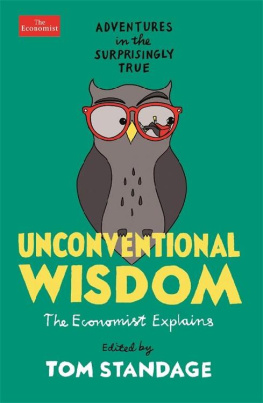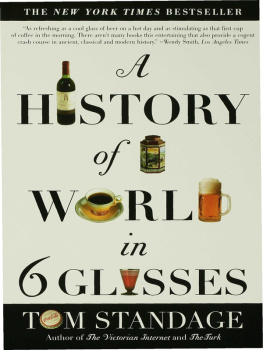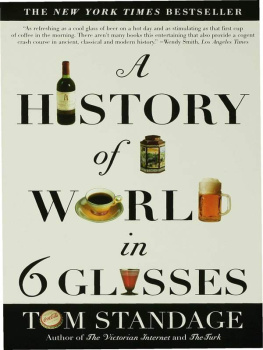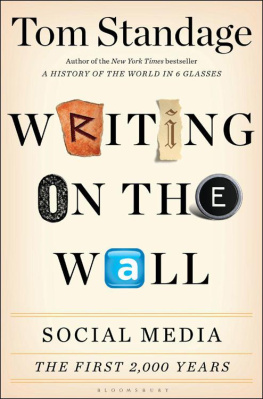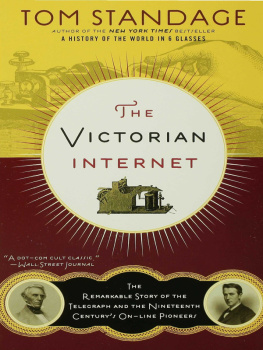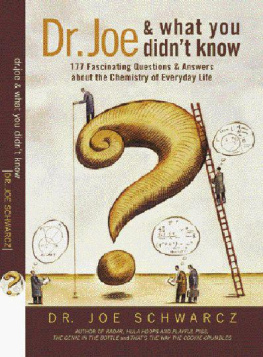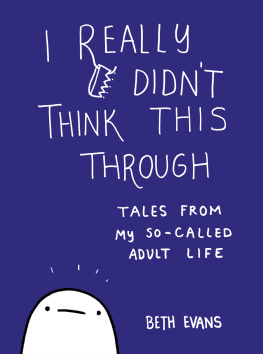Tom Standage - Go Figure: Things You Didn’t Know You Didn’t Know
Here you can read online Tom Standage - Go Figure: Things You Didn’t Know You Didn’t Know full text of the book (entire story) in english for free. Download pdf and epub, get meaning, cover and reviews about this ebook. year: 2016, publisher: Economist Books, genre: Romance novel. Description of the work, (preface) as well as reviews are available. Best literature library LitArk.com created for fans of good reading and offers a wide selection of genres:
Romance novel
Science fiction
Adventure
Detective
Science
History
Home and family
Prose
Art
Politics
Computer
Non-fiction
Religion
Business
Children
Humor
Choose a favorite category and find really read worthwhile books. Enjoy immersion in the world of imagination, feel the emotions of the characters or learn something new for yourself, make an fascinating discovery.

- Book:Go Figure: Things You Didn’t Know You Didn’t Know
- Author:
- Publisher:Economist Books
- Genre:
- Year:2016
- Rating:4 / 5
- Favourites:Add to favourites
- Your mark:
- 80
- 1
- 2
- 3
- 4
- 5
Go Figure: Things You Didn’t Know You Didn’t Know: summary, description and annotation
We offer to read an annotation, description, summary or preface (depends on what the author of the book "Go Figure: Things You Didn’t Know You Didn’t Know" wrote himself). If you haven't found the necessary information about the book — write in the comments, we will try to find it.
Go Figure: Things You Didn’t Know You Didn’t Know — read online for free the complete book (whole text) full work
Below is the text of the book, divided by pages. System saving the place of the last page read, allows you to conveniently read the book "Go Figure: Things You Didn’t Know You Didn’t Know" online for free, without having to search again every time where you left off. Put a bookmark, and you can go to the page where you finished reading at any time.
Font size:
Interval:
Bookmark:


The Economist in Association with Profile Books Ltd. and PublicAffairs
Copyright The Economist Newspaper Ltd, 2016
First published in 2016 by Profile Books Ltd. in Great Britain.
Published in 2016 in the United States by PublicAffairs, an imprint of Perseus Books, LLC, a subsidiary of Hachette Book Group, Inc.
All rights reserved.
Printed in the United States of America.
No part of this book may be reproduced, stored in or introduced into a retrieval system, or transmitted, in any form or by any means (electronic, mechanical, photocopying, recording or otherwise), without the prior written permission of both the copyright owner and the publisher of this book, except in the case of brief quotations embodied in critical articles and reviews. For information, address PublicAffairs, 250 West 57th Street, 15th Floor, New York, NY 10107.
The greatest care has been taken in compiling this book. However, no responsibility can be accepted by the publishers or compilers for the accuracy of the information presented.
Where opinion is expressed it is that of the author and does not necessarily coincide with the editorial views of The Economist Newspaper.
While every effort has been made to contact copyright-holders of material produced or cited in this book, in the case of those it has not been possible to contact successfully, the author and publishers will be glad to make amendments in further editions.
PublicAffairs books are available at special discounts for bulk purchases in the U.S. by corporations, institutions, and other organizations. For more information, please contact the Special Markets Department at the Perseus Books Group, 2300 Chestnut Street, Suite 200, Philadelphia, PA 19103, call (800) 810-4145, ext. 5000, or e-mail .
Typeset in Milo by MacGuru Ltd
Library of Congress Control Number: 2016949792
ISBN 978-1-61039-744-5 (EB)
First Edition
10 9 8 7 6 5 4 3 2 1
Table of Contents
Contents
DONALD RUMSFELD, US secretary of defence from 2001 to 2006, is known for many things: for being one of the cheerleaders of Americas disastrous invasions of Afghanistan and Iraq; for the scandal of Abu Ghraib, the Iraqi prison where inmates were tortured and abused; and, bizarrely, for releasing an iPhone app based on Winston Churchills fiendishly difficult variant of the game of solitaire. He is also famous for popularising the idea of unknown unknowns. During a press conference in 2002, while answering questions about the lack of evidence that Iraq was supplying terrorist groups with weapons of mass destruction, Mr Rumsfeld said:
Reports that say that something hasnt happened are always interesting to me, because as we know, there are known knowns; there are things we know we know. We also know there are known unknowns; that is to say we know there are some things we do not know. But there are also unknown unknowns the ones we dont know we dont know.
The notion of unknown unknowns was not original; it is used in risk-assessment and project-management circles. But Mr Rumsfelds use of the term introduced it to the popular lexicon. His explanation was widely mocked at the time for being gobbledegook; he was awarded the Foot in Mouth prize by the Plain English Campaign. This was unfair. He was making a philosophical point about the nature and limits of knowledge, building on an old saying, attributed to Socrates, that a wise man knows what he does not know. Socrates never actually put it in those words, but it is not a bad summary of his views. In Platos Apology he is depicted exploring the nature of wisdom and concluding that it is dangerous to assume that being knowledgeable in one area makes you wise in others. Socrates believed, in other words, that wisdom entails understanding the limits of ones knowledge. This is called Socratic ignorance: the awareness of known unknowns, to put it in Rumsfeldian terms.
The aim of this book is to provide an entertaining assortment of both Rumsfeldian and Socratic unknowns, in the form of explanations and visualisations from The Economist: a selection of articles from our explainer blog, The Economist explains, and graphs, maps and charts from our data blog, Graphic detail. The Rumsfeldian unknowns are things you didnt know you didnt know: Why does Sweden have so few road deaths? How can a baby have three parents? Why do so many death-row inmates die of old age? The Socratic ones include things youve probably quietly wondered about, but have not yet got around to Googling: How do hurricanes get their names? Whats the difference between Sunni and Shia Muslims? Whats the difference between a dialect and a language? In keeping with The Economists comparative, global and data-driven view of the world, we also consider things some countries do differently (Why are so many adults adopted in Japan?), economic curiosities (Why are prostitutes lowering their prices?), leisure-related oddities (Why do people like pizzas in a recession?), technological teasers (How has technology made fashion week pass?) and scientific peculiarities (How do you search for time travellers?).
No doubt you will already know the answers to some of these questions. But we hope every reader will experience unanticipated lightbulb moments and enjoy unforeseen illumination. You know that mind-stretching feeling you get when you learn something new and expected? Thats what we aim to deliver each week in The Economist, and the same is true of this book. We hope you will enjoy taking a journey, or at least a few brief excursions, into the unknowns both known and unknown.
Tom Standage
Deputy Editor, The Economist
April 2016
In the North Star tattoo parlour in downtown Manhattan, Brittany shows off her ink: a Banksy-inspired tableau covering both feet. Now a student at New York University, she hopes to be a lawyer one day. Thats why I got the tattoo on my feet, she says. Its easy to hide. Once the preserve of prisoners, sailors and circus freaks, tattoos have become a benign rite of passage for many people. In America, one in five adults has one, and two in five people under 40. Women with tattoos outnumber men. But what happens when people with tattoos look for work? Alas, not everyone is as savvy as Brittany.
Although they are increasingly mainstream, tattoos still signal a certain rebelliousness that works against jobseekers, according to Andrew Timming of the University of St Andrews in Scotland. In a study published in 2013, Dr Timming and colleagues asked participants to assess job candidates based on their pictures, some of which were altered to add a neck tattoo. Inked candidates consistently ranked lower, despite being equally qualified. In a separate study Dr Timming found that many service-sector managers were squeamish about conspicuous tattoos, particularly when filling jobs that involve dealing with customers. And a survey carried out in 2011 by CareerBuilder, a careers website, found that 31% of American employers say that visible tattoos are the personal attribute most likely to discourage them from promoting someone. Some workplaces are more open-minded: a prison-services manager explained that having tattoos made it easier to bond with inmates. Firms with a younger clientele are also more tattoo-friendly. But by and large the more visible the tattoo, the more unsavoury a candidate was deemed to be even if the boss had one.
Such prejudice may seem anachronistic, but it is not unfounded. Empirical studies have long linked tattoos with risk-taking behaviours such as smoking and alcohol abuse, and a higher number of sexual partners. People with inked skin are more likely to carry weapons, use illegal drugs or get arrested. The association is stronger for bigger tattoos, or when someone has several of them, says Jerome Koch, a sociologist at Texas Tech University. This may help explain the US Armys decision in 2014 to reinstate old grooming standards. These restrict the size and number of tattoos, ban ink from the neck, head and hands, and bar body art that might be seen as racist, sexist or otherwise inappropriate. The change is intended to promote discipline and professionalism. But it is making it harder to recruit to the army, says Major Tyler Stewart, who handles recruitment in Arizona. His battalion is turning away 50 tattooed people a week.
Font size:
Interval:
Bookmark:
Similar books «Go Figure: Things You Didn’t Know You Didn’t Know»
Look at similar books to Go Figure: Things You Didn’t Know You Didn’t Know. We have selected literature similar in name and meaning in the hope of providing readers with more options to find new, interesting, not yet read works.
Discussion, reviews of the book Go Figure: Things You Didn’t Know You Didn’t Know and just readers' own opinions. Leave your comments, write what you think about the work, its meaning or the main characters. Specify what exactly you liked and what you didn't like, and why you think so.

